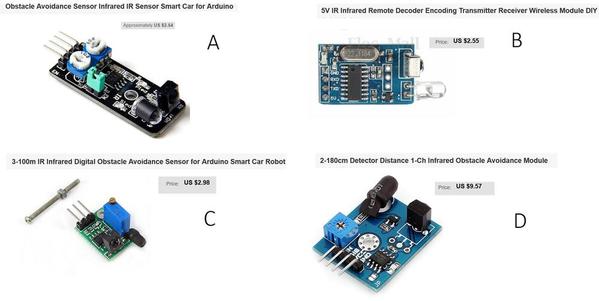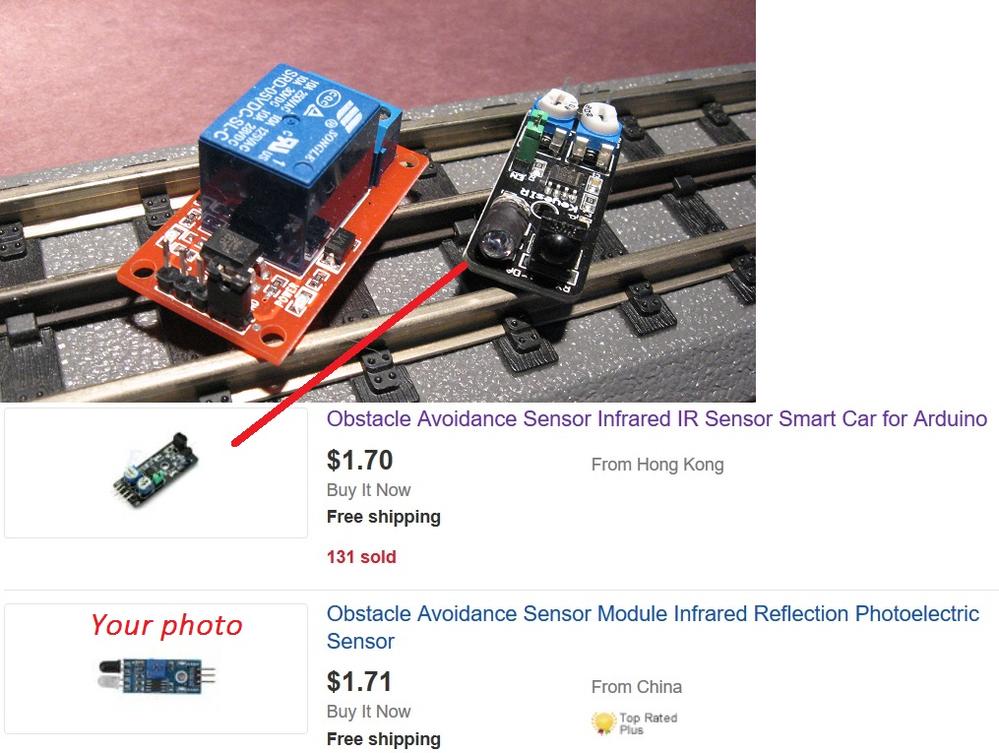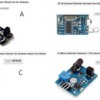Thank you NVOCC5 for digging up those links to earlier threads on roll-your-own IR detection. Lots of posts to wade thru but it does describe how to perform the ITAD-like time-delay using inexpensive parts if you want to use the ubiquitous $1 per relay modules.
Or as you identified there are off-the-shelf relay modules with delay capability; though I must point out you need to read between the lines to be sure you are getting what you need. You run into terminology like delay-on, delay-off, cycle-timer, multi-function timing, etc. and then some listings are nothing less than cagey in detailing if you need an active-hi or active-lo trigger to activate the delay!
So if you are not getting adequate sensing distance or sensitivity the alternate IR modules can indeed provide better performance. Some of the posts in the thread links describe the benefits of using modulated IR beams and as I posted earlier, these alternative modules are reasonably priced. One hassle with the example I showed is you have to manually "tune" the transmitter LED which is sort of a nuisance. But now I see modules that don't require this extra step.

I have personally messed with "A". But now it's 2017 and I found B, C, and D on eBay without looking very hard. I believe these would be better choices but have not used them myself. Perhaps someone else can attest to their suitability for occupancy detection. I ordered a "B" and will play with it but it will take a few weeks to get here.
As Brendan points out you can generally parallel multiple detector modules so that if one or more modules is active, it will trip the relay module. As he points out the detector needs to have a so-called "open-collector" output which allows multiple module outputs to be electrically connected together - if 1 or more modules is triggered, the relay trips). Otherwise, you can add a 5 cent diode to each module output to "make" it into an open-collector type output suitable for driving the relay module.
Additionally, if you like to experiment you can also drive multiple LEDs to spray the passing train with more IR energy. IR LEDs of the type used on these module run maybe 10 cents each. Yes, you have to fuss with more discrete components...but if you're going to de-solder components from the modules to better place them under the track or whatever, then that's another option. This would increase the effective sensing distance...or for the same sensing distance improve detection of the dark surfaces.
Another option used by some off-the-shelf sensing suppliers is to shoot the IR beam across the track and let the train break the beam. This is a MUCH simpler electrical problem than sensing the reflection. Of course you must now mount a component on each side of the track...but by aiming the beam diagonally across the track you do not have the problem of gaps between cars. This can relax the need for a time-delay.








 ordered that have a longer range, but might be a while.There are four posts on some of Stan's examples. What is the extra one for?
ordered that have a longer range, but might be a while.There are four posts on some of Stan's examples. What is the extra one for?